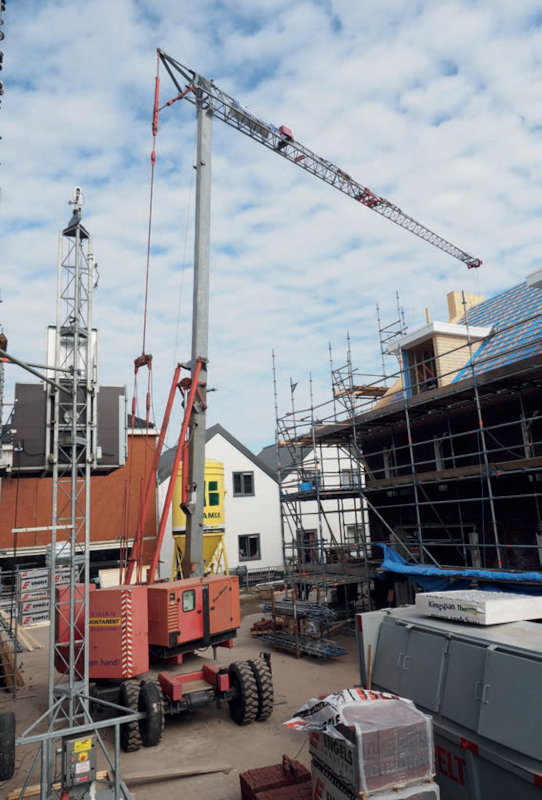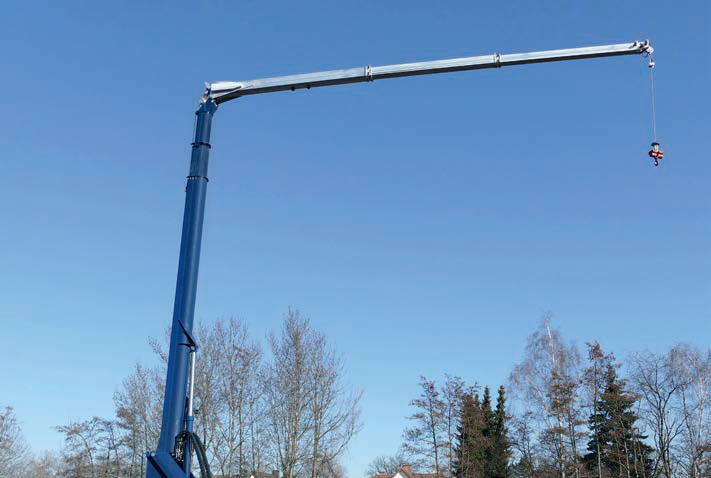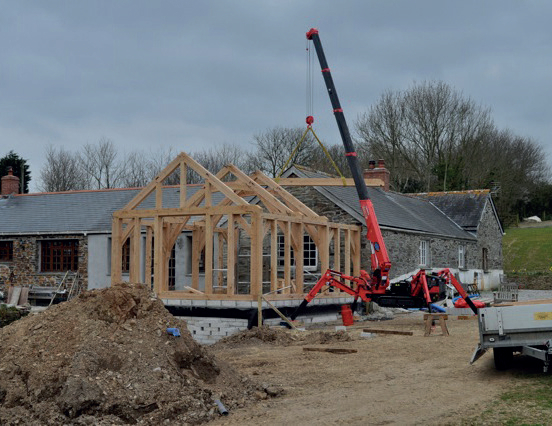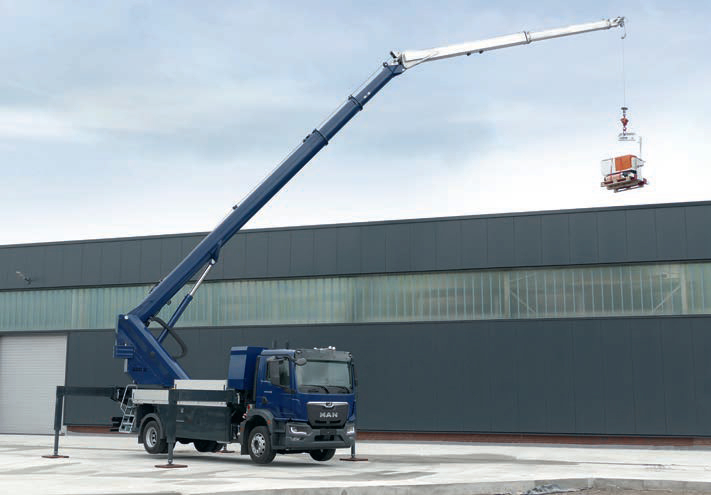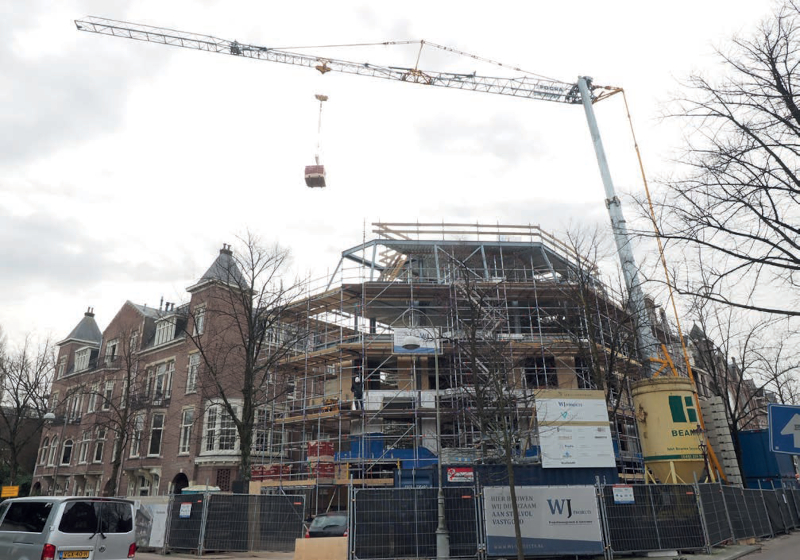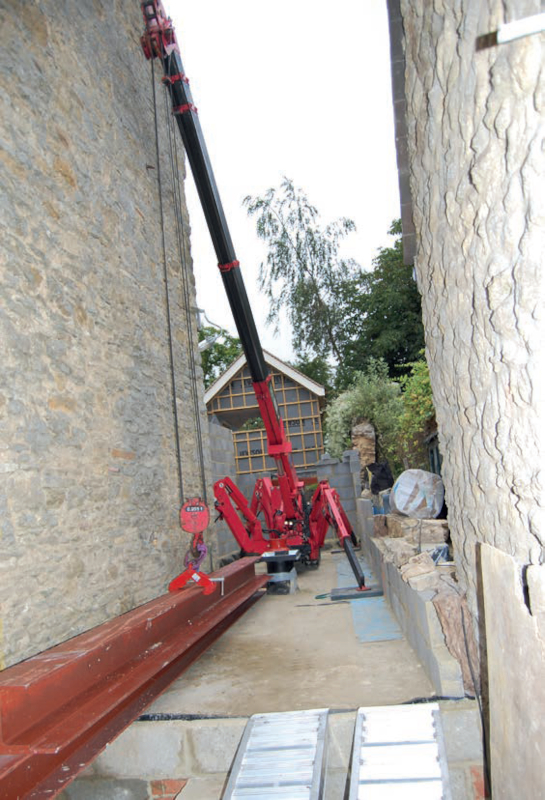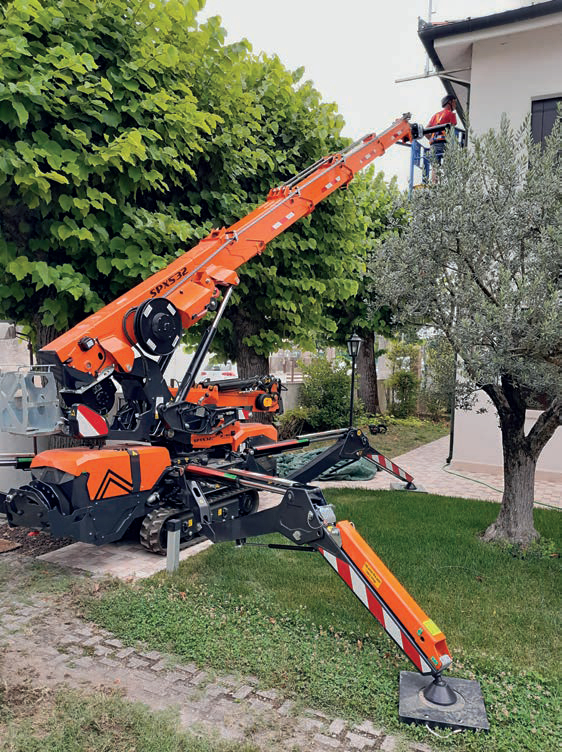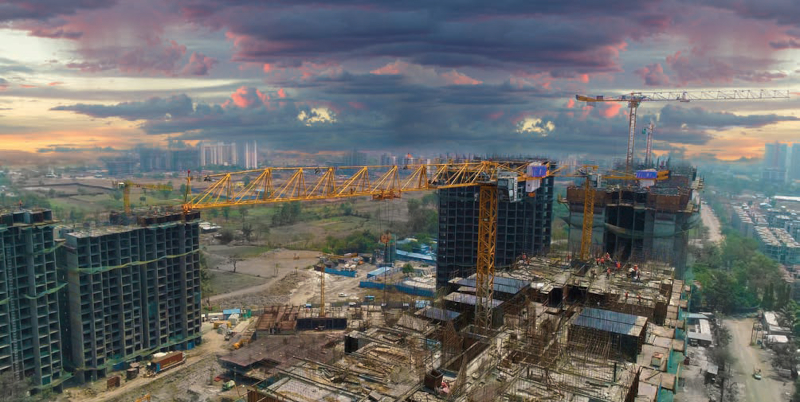Home sweet home
29 April 2022Houses are needed everywhere. All kinds of cranes can help build them. Julian Champkin reports.
There are very nearly eight billion people alive on this planet and the number is rising. Every one of them needs somewhere to live. Residential housing is not going to go out of fashion any time soon. Building those houses will be a continuing need.
Houses can be built in many different ways. Even in the developed world there is huge variation. The 20-storey high-rise residential development obviously needs some kind of tower crane to build it; but almost every other form of housing, from the one-storey bungalow via the two-floor family house up to the seven- or eight-storey apartment block, is of a size and height that can be easily reached by any number of different kinds of crane; and most of those different types of crane have been and are being used to build houses.
The mini-spider crane, the truck-mounted knuckleboom, the all-terrain, the tele-crawler, the self-erector, the aluminium-boom crane on wheels trailed to the site behind the builders truck... you name it and it will be someone’s crane of choice for building or repairing some kind of house. We can start at the smaller end, with mini cranes, and work on up.
Mini cranes such as those of the Jekko range are of course designed for work in confined spaces.
“They are small enough to pass through normal double, or even single, doorways to enter buildings and complete construction work, such as glazing, from the inside,” says Cristina Da Frè, Jekko’s marketing manager. “Non-marking white tracks allow the crawler versions to pass over finished floors; and it is perfectly possible for, say, one of Jekko’s emblematic SPX532 spider cranes to be installed on an upper floor and to reach out through an open window space and lift materials - glazing panels or other fitments - up from outside the building.”
But spider and mini crawler cranes are not limited to working inside buildings on finishing tasks. Their size and ability to enter confined spaces are equally useful, and just as much used, in original construction.
Daniel Ezzatvar is marketing and special projects director of sales and rental company GGR, noted for their glazing robots, spider cranes and UNIC mini crawlers. “There is a symbiosis between building design and the cranes that build them,” he says. “There is a feedback loop between architects, materials, and lifting gear. For example, when large insulated glass panels became possible and available, architects began designing them into buildings; and the glazing robot and glazing attachments for cranes followed. Nowadays a typical housing use for one of our mini cranes is lifting steel I-beams into position and then glazing between them. Lifting I-beams is about as bread-and-butter as housebuilding gets.
“Older buildings, of brick and tile typically, may have very restricted access; newer ones can be of lighter materials – wood cladding for example - and are generally but not always less constricted. But in either case there are three key issues: transport – moving your crane from your depot to the job site; access – getting it into the site once you are there; and finally how much working space you have when you get there. Compact cranes score in all of them.
“The fact is that today’s mini-cranes do the normal tasks of house-building much more easily and economically than their bigger cousins. Mini spiders and mini crawlers can be transported on a trailer or builder’s truck. They are small and mobile enough to drive themselves down side-alleys and even up steps. And since a spider or mini crawler has the reach to lift tiles over a house roof to the other side, and the capacity to lift roof trusses and everything else that a house needs, why use something that is bigger, less manoeuvrable and more expensive to deliver and run?“
“Another virtue of smaller cranes is their range of specialisation. A contractor might own cranes that cover all that he needs for most middle-of-the-road jobs but may come across a specialised or extreme need - of reach, of capacity, of tight access – for one particular job. Then he can come to our hire fleet which spans the whole range, with specialist attachments as well, if required, and we can rent it to him or do a contract lift.”
And housing designs and methods are still changing. Prefabrication is a growing trend. “Last month I visited a factory that makes prefabricated housing units," continues Ezzatvar. “Our cranes were doing test lifts there, doing pick-and-carry and stacking the panels. So there is yet another type of crane helping make houses, even though it has evolved away from working on-site. And our Czech distributor is using our cranes to erect the prefabricated units on site.”
Another lightweight option, introduced by Böcker three decades ago in Europe and gradually gaining traction in the UK and the US is the aluminium-boom truck crane. Böcker’s latest addition to their range is mounted on an 18 t truck and is actually a steel-masted teleboom truck crane with an aluminium jib at the top. The AK 42 has a lifting capacity of six tonnes and extension lengths up to 42m; it can, for example, lift 1.5 t to a range of 18m at a height of 24m. Its more powerful hydraulic system increases speed by up to 70%, says Böcker, which means that it can operate at significantly improved speed.
The unique ability of the crane, though, is that its mast can be raised to the true vertical, at a 90° angle, to point to the sky. “That is an advantage when working close to a high façade, and in many other housing applications also,” says Böcker’s marketing manager Britta Lewitz.
Another innovation is in the strong boom joint, which can straighten out to 180 degrees, making the boom an extension of the mast. “That is ideal for picking up loads close to the crane or for working in tight set-up situations,” Lewitz adds.
When the mast is pointing upright setting the boom at right angles to it also enables the AK42 to function as a tower crane in miniature: a vertical mast supporting a horizontal boom. In this set-up loads can be transported into a building by telescoping out the jib: it can be telescoped out fully and at high speed under loads of up to 1,000 kg. The end result is in effect a tower crane mounted on an 18 t flatbed truck – which when travelling to the job site has also ample room on it for carrying building materials to the site.
Böcker also have a new trailer crane, the AHK 36e. It is the first battery-operated trailer crane with 230 V charging technology, which means it can be charged from any household supply as well as manoeuvring and setting-up on power from its battery. It has an 8 kW electric motor, lifts up to 2.4 t with low emissions and low noise, and reaches extension lengths of up to 36m with a gross vehicle weight of only 3.5t.
“There are many reasons our cranes are widely used for house construction,” says Lewitz. “They are light in weight, they assemble easily - even in tight spaces, they have compact dimensions, and a small footprint. For eco-friendly and resource-saving operation they can be equipped with strong e-motors and/or battery drive with 230 V charging technology, depending on the model. And they, of course, offer enough power and reach to perform all tasks on the construction site.”
Another lightweight and transportable substitute for the tower crane that shares its up-and-across geometry is the self-erector. Montarent are specialists here. Our photograph (p40) shows a Montalift 102 4WDS self-erecting tower crane with 24 m jib being used on a three-family-house project in Roelofarendsveen in The Netherlands. “Instead of using a stationary tower crane on each house, the mobile tower crane is moved easily from one house to the next,” says Richard Blokker, Montarent’s planning and logistics officer. “The crane can move in its erected position on site, which means it can deal with the limited space available and enlarges its working range.
“We are seeing a lot of demand for self-erecting tower cranes at the moment. The Montalift ONTM21 4WDS is still our most popular model.”
It is a 21tm crane that can lift 1.8 t and can be fully erected within ten minutes via radio control and display. “But we are expanding our range with a larger model with a 30m jib and 22m lifting height.
“Recently we have been seeing also larger but stationary self-erecting tower cranes being used in the building of new apartments and transformation of office blocks into apartments,” Blokker says.
He gives the example of a Potain HUP 32-27 seen on a project in Amsterdam. “And trailer-mounted self-erecting tower cranes are still taking market share from the smaller traditional stationary tower cranes in the housing industry.”
Speaking of Potain, they claim the world's widest range of self-erecting cranes with the Hup, Hup M, Igo, Igo M and Igo T series. “They are mainly used in residential construction,” says Dominique Leuiller, marketing director for Europe. “Thanks to the reach of the boom, you can usually distribute the required parts throughout the entire construction site from a fixed stand. Models range from the Igo 13 with a 20m jib and a maximum load of 1.8 t to the Igo T 130 telescopic crane with a boom of 50m and a maximum load of 8 t.”
The most recent introductions in Potain’s self-erecting range are the Hup M 28-22 and, in June last year, the Igo T 99.
“The Hup M 28-22 is one of the most popular Potain models for carpenters, roofers and construction companies,” says Leullier. It offers a maximum payload of 2.2 t and a maximum load of 850 kg with a 28m boom length. The crane has an integrated double-steering transport axle (25 or 80 km/h) with +/- 20° swing, controlled by the crane’s remote control. “It is compact with a length of 11.6 m," says Leullier. "The boom sections are offset from the side of the mast, which gives a low transport height. There is radio remote control for crane adjustment, erecting, crane operation, maintenance and disassembly, and there is intelligent setup software for simple and smooth assembly.”
The second model, the Igo T 99, is a six-tonne-capacity telescopic self-erecting crane which can carry 1.2 t at 48m jib end; hook height with horizontal boom position is up to 38.5m. The main innovation here is the ‘Smart Set-up’ control system. Via radio remote control it represents every step of assembly, telescoping and disassembly, so simplifying and securing set-up work. The fitter is guided step by step through the assembly menu via a 2.4-inch colour screen on the transmitter of the radio remote control.
“Self-erectors are sold throughout Europe, though the main markets remain Germany, France and Italy,” says Leullier. “They handle construction material on site, concrete buckets, prefab elements, scaffolding elements, and roof tiles. Whether customers use a big self-erector or a small top-slewing tower crane depends largely on the custom of their country. It often also depends on the duration of the on-site job. The fact that self-erecting cranes can be easily transported with maximum two trucks (or for the biggest Igo T 3 trucks, one for the crane and two for the ballast), one towing the crane and the other for ballast, is a good argument here: top-slewing cranes requires more truck. Our self-erector customers base remains stable, even if the trend is now often to go for heavier prefabricated parts. Even so, self-erectors, powerful as they are, have limits and will never be able to compete with the larger top slewing cranes for really heavy lifts.”
As he says, and as our picture below of Potain hammerhead cranes giving shape to a major new residential development in Pune, in India, shows, despite all our examples of housebuilding with smaller, lighter, cranes there are still cases where the traditional tower crane is still needed. Housing is still going to offer a use and a market to almost very kind of crane.
